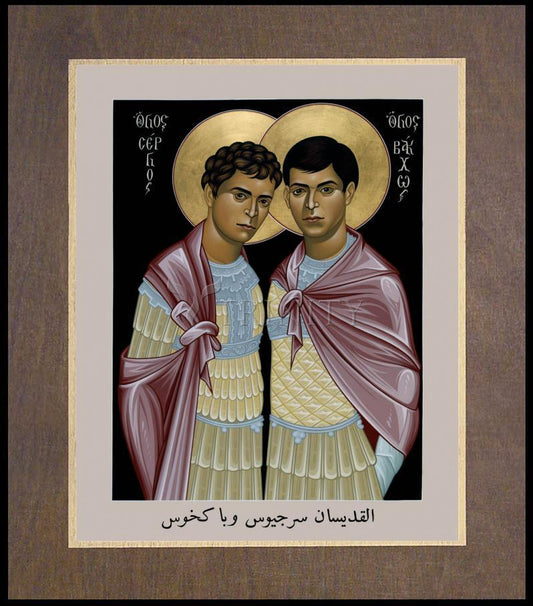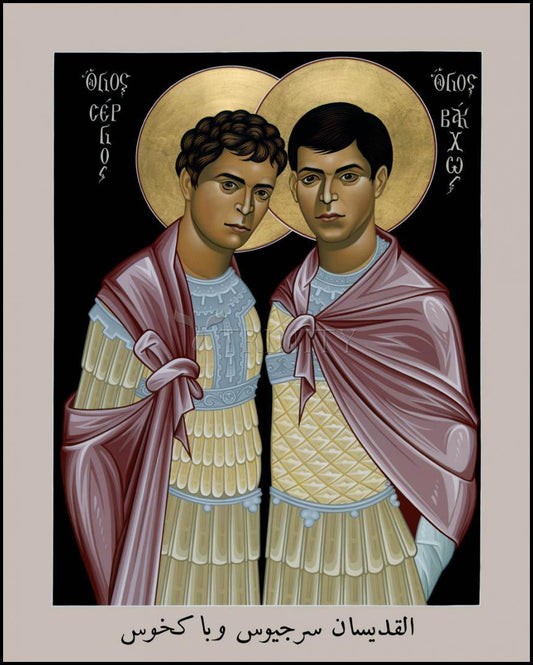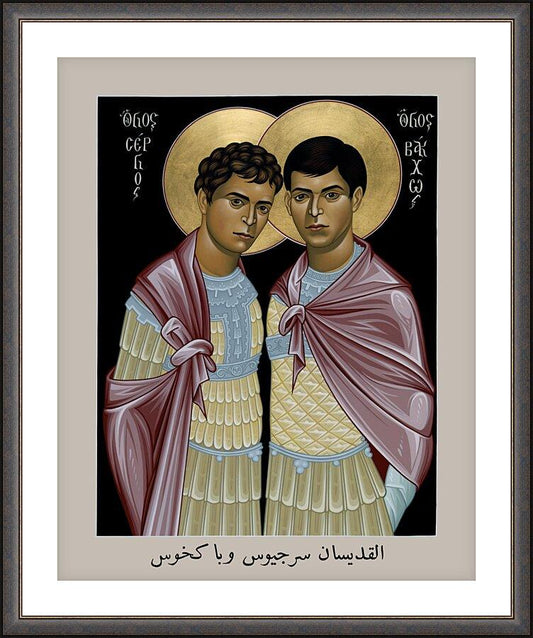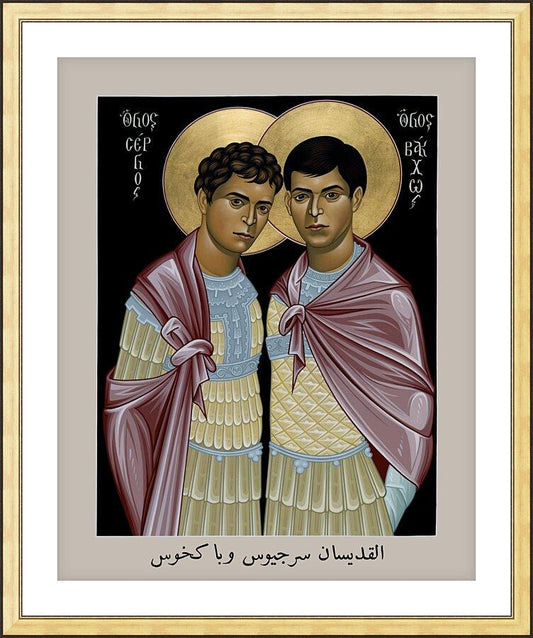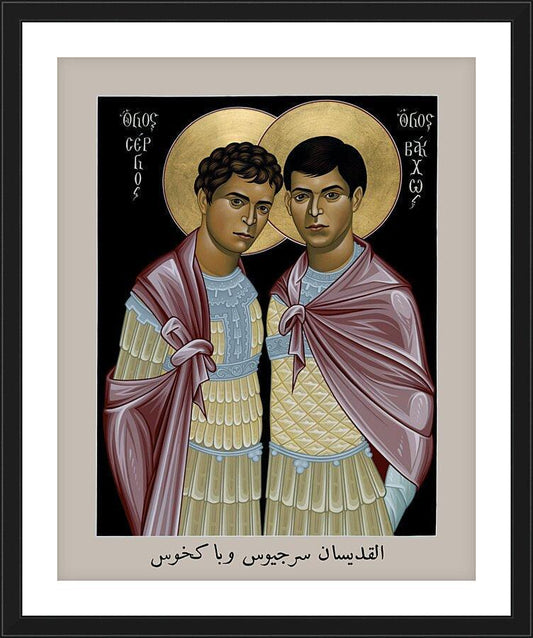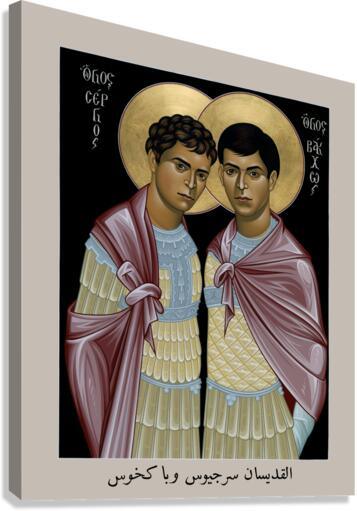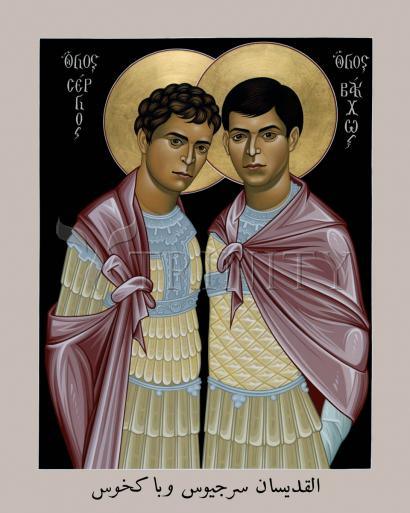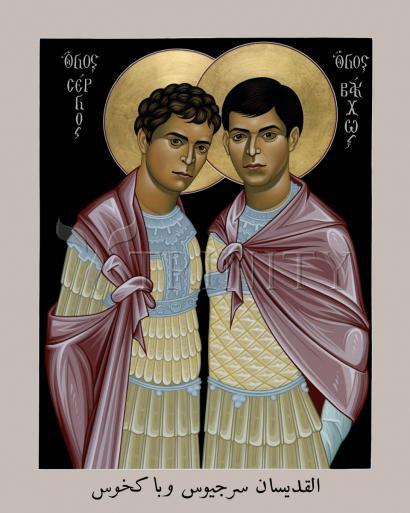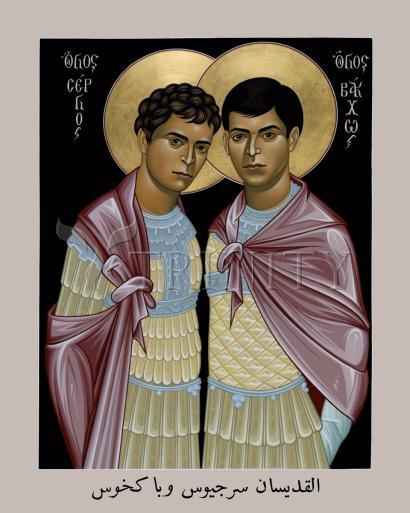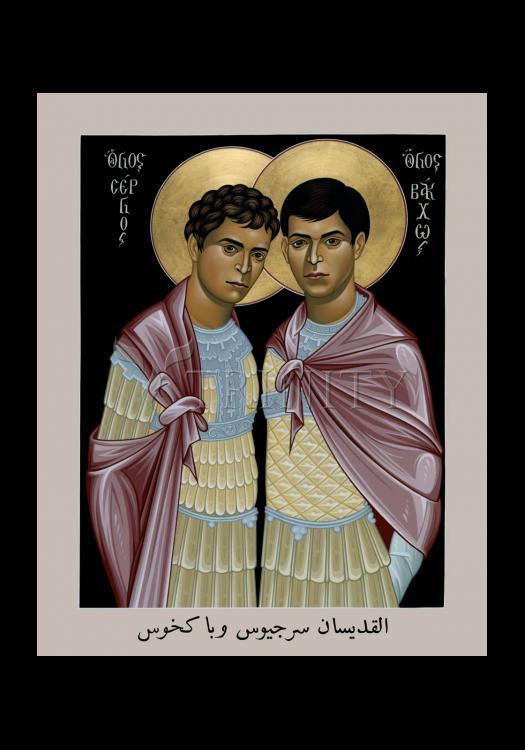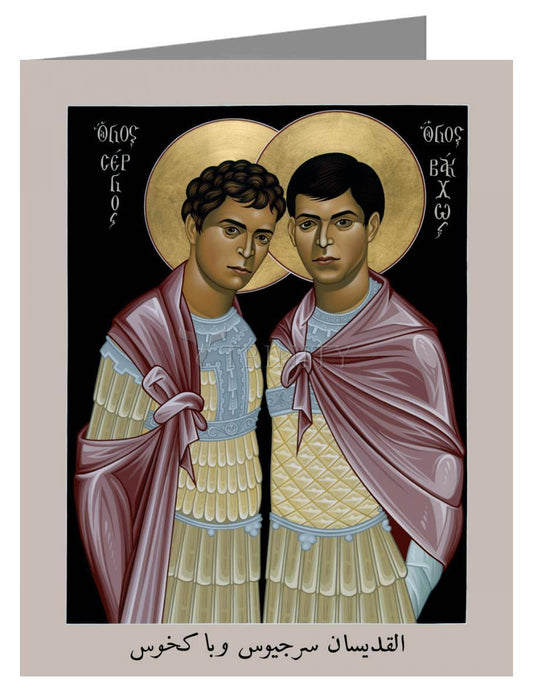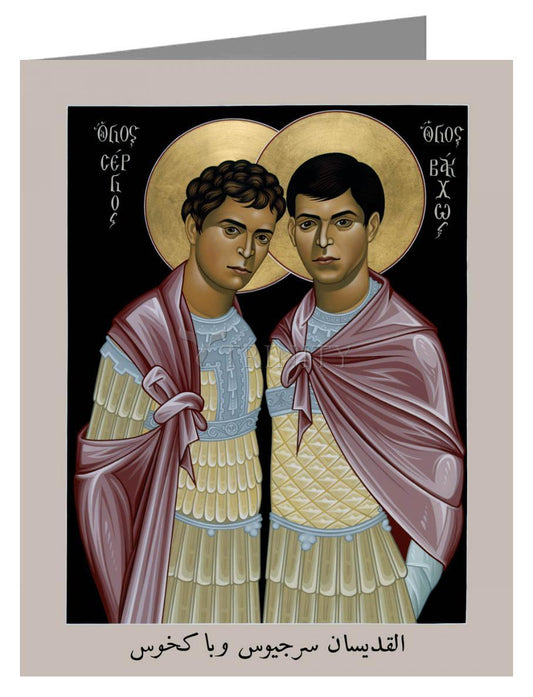Martyrs, d. in the Diocletian persecution in Coele-Syria about 303. Their martyrdom is well authenticated by the earliest martyrologies and by the early veneration paid them, as well as by such historians as Theodoret. They were officers of troops on the frontier, Sergius being primicerius, and Bacchus secundarius. According to the legend, they were high in esteem of the Caesar Maximianus on account of their bravery, but this favor was turned into hate when they acknowledged their Christian faith.
When examined under torture they were beaten so severely with thongs that Bacchus died under the blows. Sergius, though, had much more suffering to endure; among other tortures, as the legend relates, he had to run eighteen miles in shoes which were covered on the soles with sharp-pointed nails that pierced through the foot. He was finally beheaded. The burial-place of Sergius and Bacchus was pointed out in the city of Resaph; in honor of Sergius the Emperor Justinian also built churches in honor of Sergius at Constantinople and Acre; the one at Constantinople, now a mosque, is a great work of Byzantine art.
In the East, Sergius and Bacchus were universally honored. Since the seventh century they have a celebrated church in Rome. Christian art represents the two saints as soldiers in military garb with branches of palm in their hands. Their feast is observed on 7 October. The Church calendar gives the two saints Marcellus and Apuleius on the same day as Sergius and Bacchus. They are said to have been converted to Christianity by the miracles of St. Peter.
According to the "Martyrologium Romanum" they suffered martyrdom soon after the deaths of Sts. Peter and Paul and were buried near Rome. Their existing Acts are not genuine and agree to a great extent with those of Sts. Nereus and Achilleus. The veneration of the two saints is very old. A mass is assigned to them in the "Sacramentarium" of Pope Gelasius.
"Excerpts from The Catholic Encyclopedia, Volume XIII by Klemens Loffler



